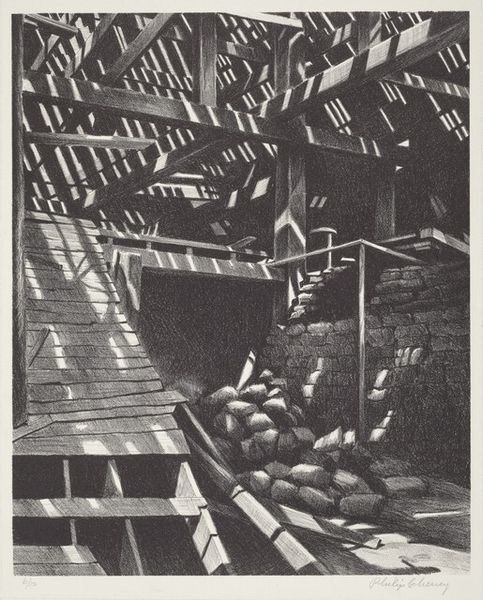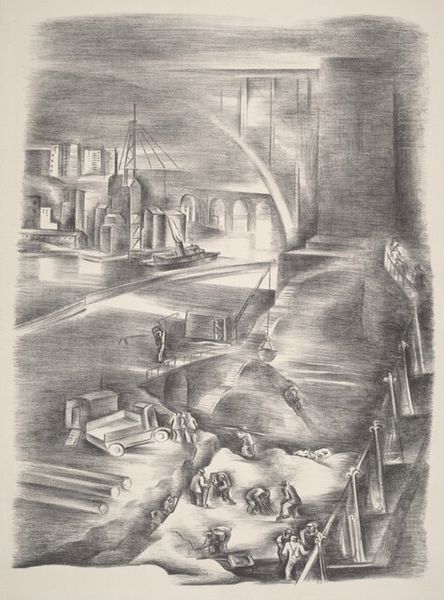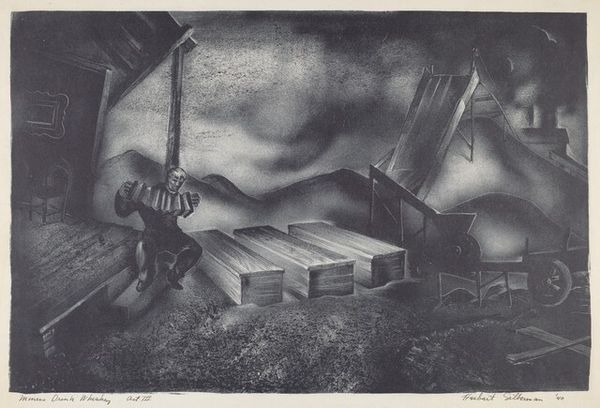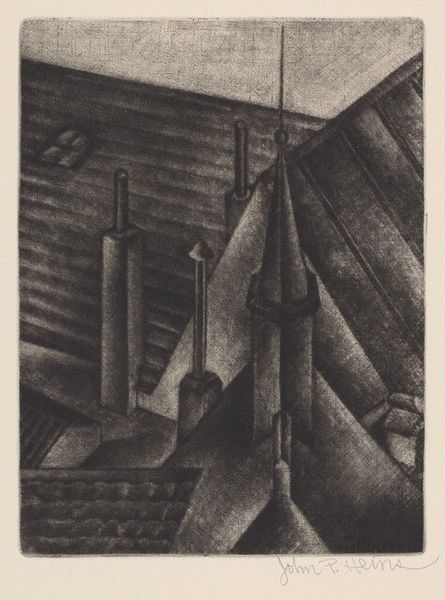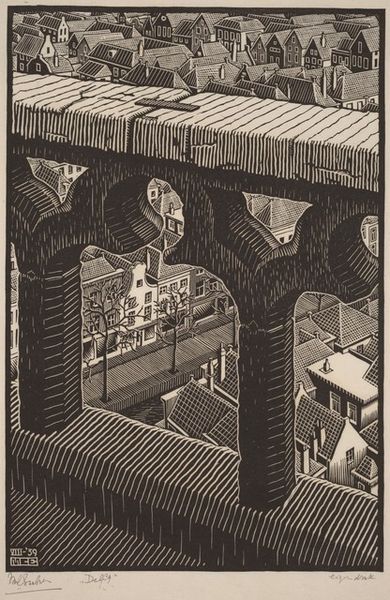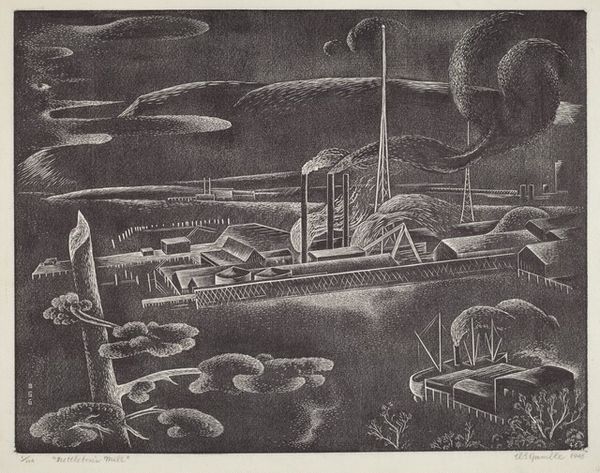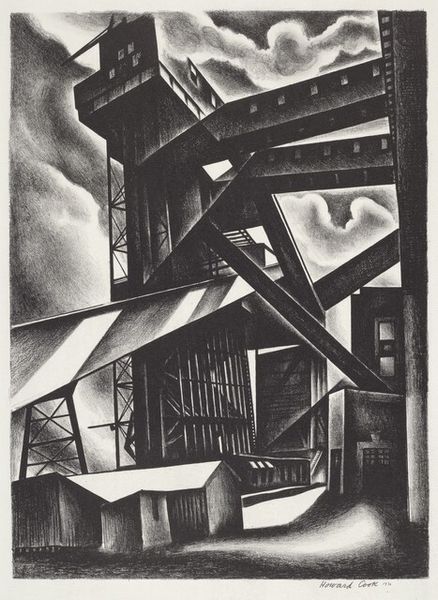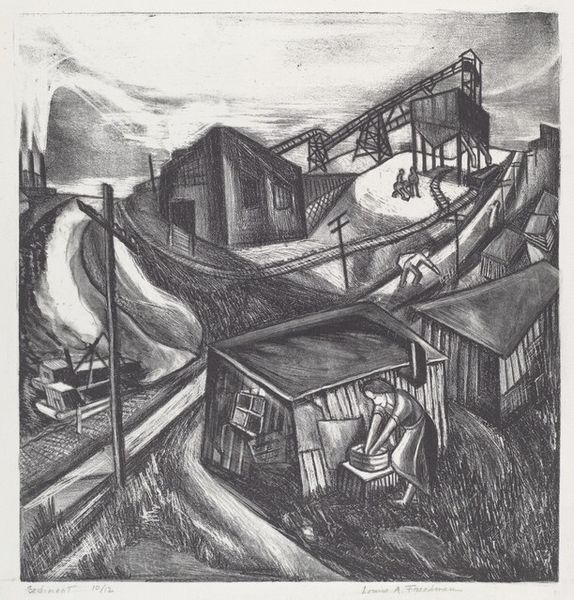
drawing, print, graphite
#
drawing
# print
#
landscape
#
pencil drawing
#
surrealism
#
graphite
#
graphite
#
realism
Dimensions: Image: 345 x 282 mm Sheet: 403 x 333 mm
Copyright: National Gallery of Art: CC0 1.0
Curator: Thomas Danaher’s “Lonely Lake,” created around 1939, offers us a rather striking composition in graphite. What's your first reaction? Editor: Somber, definitely somber. The monochromatic palette emphasizes a kind of isolation, doesn't it? That single boat on the water feels so solitary, framed by the darkness of the foreground. Curator: Absolutely. And note the printmaking technique – possibly lithography or etching – creates a tonal depth through intricate cross-hatching and stippling. Given that the work was made during the WPA era, it's not unreasonable to think about access to affordable materials playing a key role in technique and the use of grayscale shading. Editor: It makes me think about the broader socio-economic context. Was this solitude a chosen one, or was it a reflection of the widespread alienation experienced during the Depression? The ladder, the lamp, the crude construction around the edges…they hint at lives on the margins. Curator: Precisely. It is very grounded in specific material conditions. Think of the labor that goes into creating a print like this. The work also pushes at the boundaries between industrial production and artistry, a challenge to established ideas about “fine art.” Editor: And isn’t there a gendered element as well? The ruggedness, the implied manual labor…is this a traditionally masculine space and experience being represented? Who is welcome to access this sort of quiet and contemplation? Curator: Interesting. From my perspective, it also explores material limits and availability of media as a factor of the artwork's existence and message. Its somber tone can't only be seen as representational: it’s tied to what it's made from and its likely availability due to material processes. Editor: Food for thought. I like how the perspective invites us to reflect on human intervention on landscapes and question accessibility to such environment and lifestyles. It complicates a notion of nature as an idyllic place that is equally available for all. Curator: In essence, a work steeped in technique and material circumstances speaks volumes. Editor: Agreed. A powerful commentary on solitude and the social landscape.
Comments
No comments
Be the first to comment and join the conversation on the ultimate creative platform.
